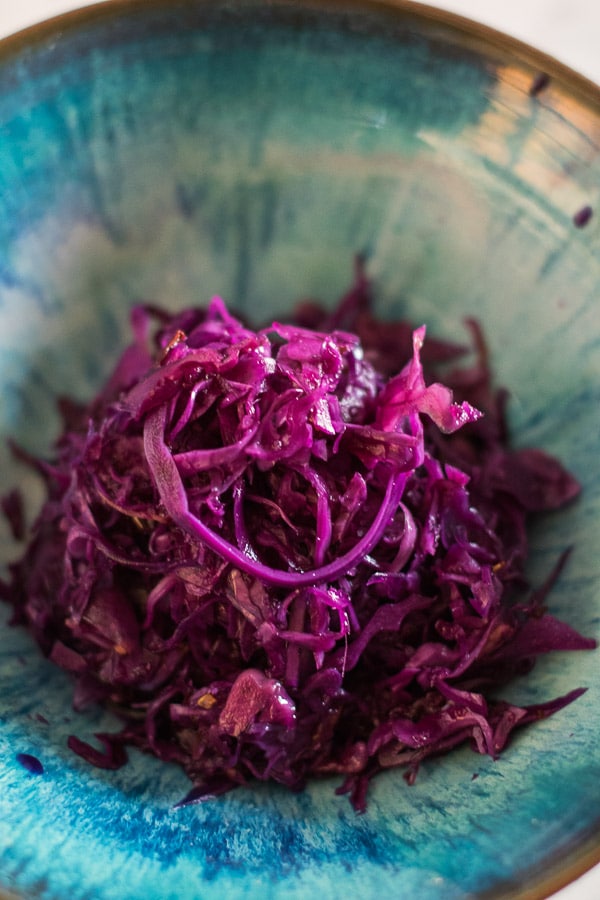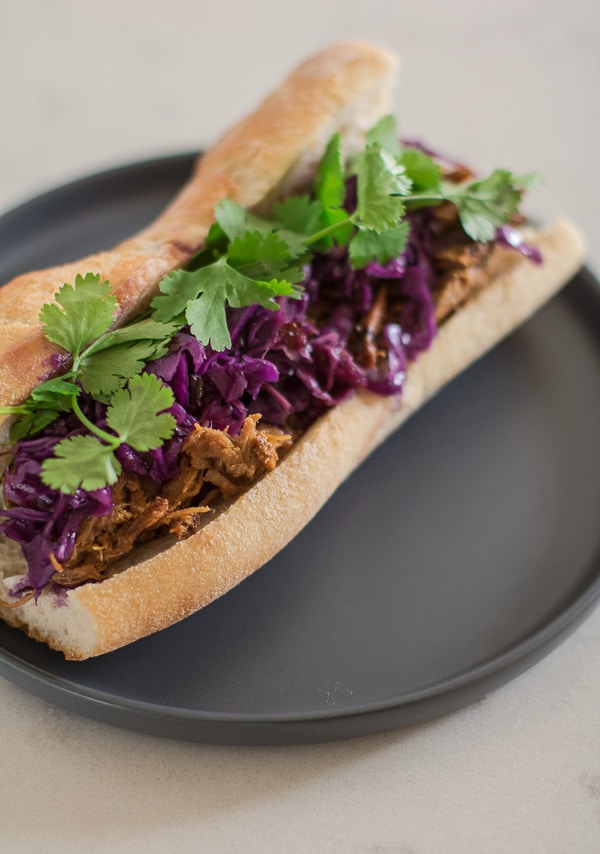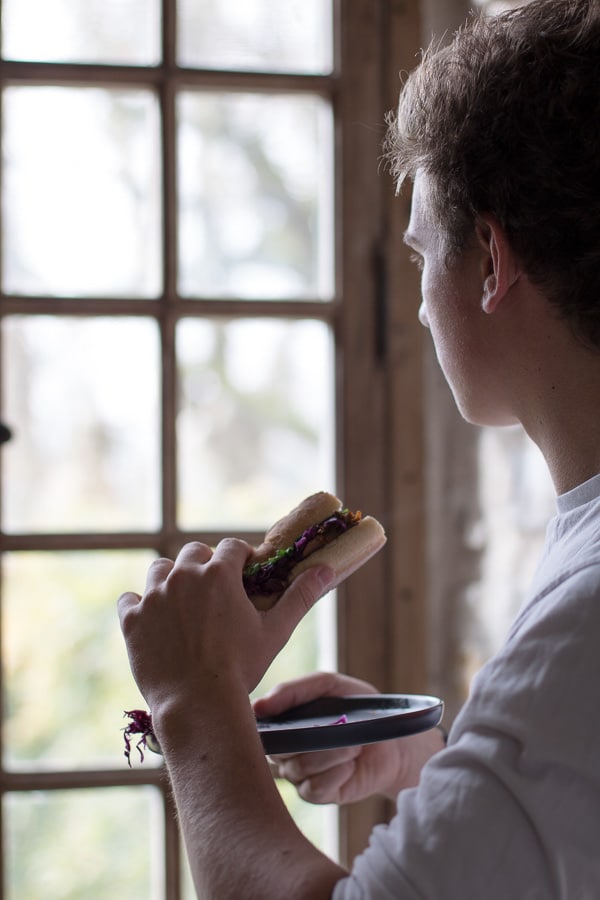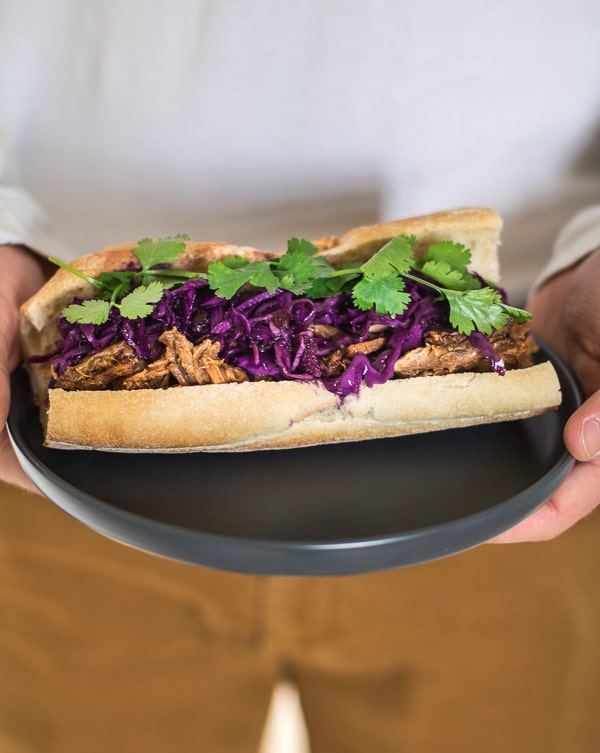
I’ve been making Chinese pickled cabbage and ginger since 2001. I know this because I checked the publication date on my tattered copy of Belinda Jeffrey’s 100 Favorite Recipes; it’s stained, loose pages, held together with a ribbon, are now propped up in a corner alongside other saggy spined favorites and those just barely hanging onto their hardcovers.
Enthusiastic use that ages cookbooks, not time, but for all the on-trend tomes that are trotted out each year, what lies ahead for the kale smoothie, the paleo protein ball, and carb-less carbonara? Will there be ribbons tenderly tied around these pages? And why is it that the unglamorous, often picture-less classics I come back to again and again would hardly get so much as a sniff from a publisher today, let alone survive on social media. Is it because we need to eat by a set of rules? Is it all about our ever increasing need for special needs? Perhaps it’s because their recipes can’t be spiralised.
Thankfully, pickling and fermentation are as old as time; not even a glamorous half-dressed French cook clinging to her rolling pin could make it sexy. It’s all about bacteria and lactic acid and belching buckets or decomposing vegetables. Fermentation doesn’t rely on dietary trends, if it did, we wouldn’t have been eating age-old staples like bread, cheese, wine, beer, charcuterie, or dare I say it, chocolate. More importantly, fermentation is an integral part of who we are and how we digest our food. It’s alive, dynamic and essential to life on earth.


I pickle and preserve lots of things, but there is always a jar of Chinese pickled cabbage and ginger in my fridge. It comes out in the summer when the BBQ is sizzling with Asian marinaded chicken, but it’s also perfect in the cooler months with pulled pork, Hoisin.duck or a whole poached chicken in an aromatic Chinese master stock. That said, it’s equally great with cheese on a sandwich.


This video by Sandor Katz makes the case for fermentation beautifully.
FERMENT from Southern Foodways on Vimeo.
Here are a few of my fermentation favourites:
The Art of Fermentation, Sandor Katz
Salt, sugar, smoke, Diana Henry
Mamushka, recipes from Ukraine and beyond, Olia Hercules
And finally this, from Michael Pollan’s Cooked: A Natural History of Transformation
“To ferment your own food is to lodge a small but eloquent protest – on behalf of the senses and the microbes – against the homogenisation of flavours and food experiences now rolling like a great, undifferentiated lawn across the globe. It is also a declaration of independence from an economy that would much prefer we remain passive consumers of its standardised commodities, rather than creators of idiosyncratic products expressive of ourselves and of the places where we live, because your pale ale or sourdough bread or kimchi is going to taste nothing like mine or anyone else’s.”
Belinda Jeffery’s Pickled Red Cabbage with Ginger & Chilli is a vibrant and flavorful accompaniment that pairs well with a variety of dishes. This recipe combines the crunchiness of red cabbage with the zest of ginger and the heat of chilli, all enveloped in a tangy-sweet pickling solution.
Ingredients:
-
1 small red cabbage (about 750g)
-
1 tablespoon fine table salt
-
1 cup rice wine vinegar
-
1 cup caster sugar
-
4-6 tablespoons fresh ginger, finely sliced into matchsticks
-
1-2 small red chillies, finely chopped
-
Toasted sesame seeds (optional, for garnish)
Instructions:
-
Prepare the Cabbage:
-
Finely shred the red cabbage, discarding the tough core.
-
Place the shredded cabbage in a large bowl, sprinkle with salt, and mix thoroughly.
-
Transfer the salted cabbage to a colander set over a bowl.
-
Place a plate on top of the cabbage and weigh it down with approximately 750g (e.g., canned goods).
-
Let it drain at room temperature for about 3 hours.
-
-
Prepare the Pickling Solution:
-
In a separate bowl, whisk together the rice wine vinegar, caster sugar, sliced ginger, and chopped chillies until the sugar dissolves.
-
Refrigerate this mixture while the cabbage drains.
-
-
Combine and Pickle:
-
After the cabbage has drained, press out any excess liquid and transfer it to a large bowl.
-
Pour the chilled pickling solution over the cabbage, ensuring all pieces are well coated.
-
Mix thoroughly, cover, and refrigerate for at least 8 hours or overnight, stirring occasionally to ensure even pickling.
-
-
Storage and Serving:
-
Once pickled, transfer the cabbage to airtight containers, pressing it down to keep it submerged in the liquid.
-
Store in the refrigerator, where it will keep for several months.
-
Before serving, garnish with toasted sesame seeds if desired.
-
Serving Suggestions:
This pickled cabbage complements a wide array of dishes, including cheeses, barbecued meats, and sandwiches. It’s also a sensational side for Asian-inspired meals.
Recipe adapted from Belinda Jeffery’s original creation.

+ ADD A COMMENT